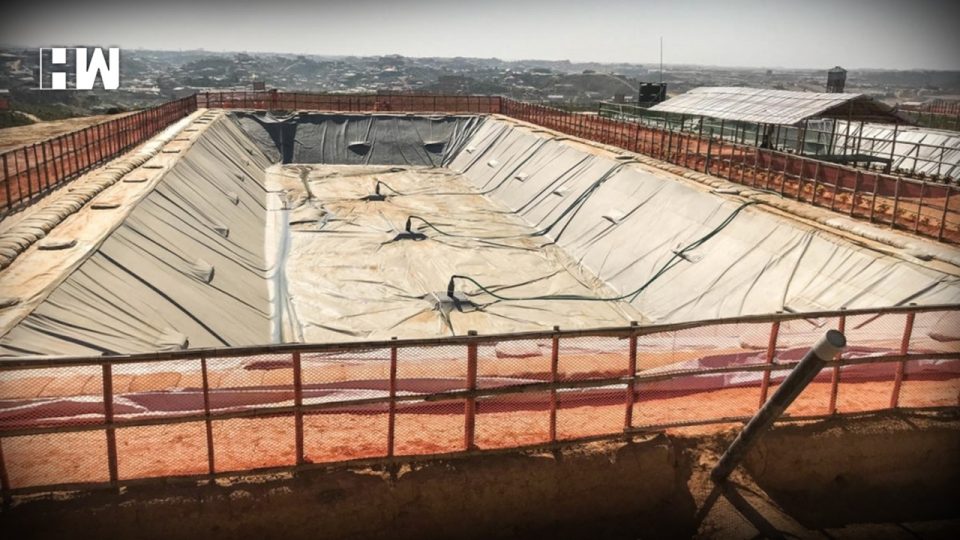In January, Oxfam opened the largest human waste treatment plant ever built in a refugee camp, in Cox’s Bazar, Bangladesh. The industrial-scale plant, funded by the UN Refugee Agency, UNHCR, can process the waste of 150,000 people.
Being able to treat large volumes of faecal waste on site, rather than having to transport it elsewhere, is a big step forward in how to safely and sustainably dispose of such waste in emergencies.
Last year more than 200,000 cases of acute diarrhoea were reported in the Rohingya camps, as well as respiratory infections and skin diseases like scabies – all related to poor sanitation and hygiene.
Over seven months, Oxfam engineers and Rohingya refugees have built the massive system which has been specially designed for the steep, hilly terrain and to have the cheapest possible operation and maintenance costs.
A suitable site was provided by the Government of Bangladesh and the project was delivered in collaboration with the Refugee Relief and Repatriation Commissioner’s Office in Cox’s Bazar.
Oxfam water and sanitation engineer Salahuddin Ahmmed said: “Safe sanitation is vital to prevent outbreaks of disease but disposing safely of human waste in the world’s biggest refugee camp is a major challenge. This ecological plant will help to keep refugees healthy by treating 40 cubic meters of waste a day – a huge amount. The initial investment is well worth it because the plant is cheap and easy to run and could last for 20 years – benefitting local communities when this emergency is over. We expect to replicate this model in future crises.”
In emergencies, the most common method of waste disposal is to use tankers to suck out the sewage from latrines and take it away. But around 85 per cent of the world’s refugees are in developing countries, often lacking adequate sewage systems to deal with all this extra waste. Treating it on site reduces the risk that it will which end up being dumped in a field or polluting a local stream.
The new, ecological plant, made up of treatment ponds and wetlands, is safe for people and the environment. It has multiple treatment stages to prevent contamination of local water sources and a high-density polyethylene liner and covered anaerobic unit to stop unpleasant odours escaping.
The plant also produces biogas – Oxfam is exploring how to get this to refugee families to cook with.
Aki is an 18-year-old Rohingya refugee who works as a community volunteer for Oxfam, talking to fellow refugees about good hygiene, handwashing, and keeping toilets clean. After a tour of the new plant, she said she had a better understanding of how her work is part of Oxfam’s wider efforts to stop outbreaks of disease.
Aki said: “I didn’t know what happened to all the waste from the latrines. I’m happy that Oxfam has built this plant as it will help prevent the spread of diseases. Last year lots of people were sick with serious diarrhoea. But we are seeing improvements. We can tell our community that this plant is doing something that will help for the future, and maybe also produce cooking gas. It’s great!”
Close to a million Rohingya refugees living in Bangladesh still need food, water, shelter and other essential aid to survive. Oxfam is calling for more aid and resources to improve conditions beyond the basics and keep people safe.
Oxfam is providing vital aid including clean water and food vouchers to Rohingya refugees in Bangladesh, and has so far reached at least 266,000 people.
As an independent media platform, we do not take advertisements from governments and corporate houses. It is you, our readers, who have supported us on our journey to do honest and unbiased journalism. Please contribute, so that we can continue to do the same in future.

